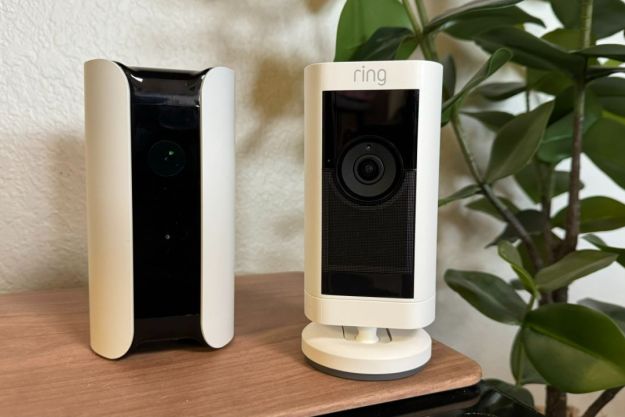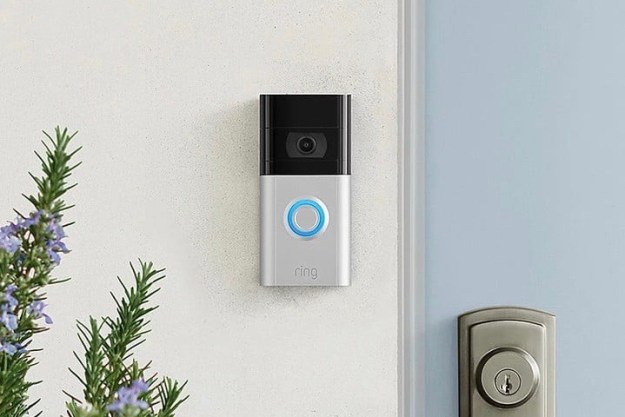There are terrifying stories of hackers taking over security systems and spying on families through their cameras. These stories can make you feel a little paranoid if you have a security system.
Connectivity features can enhance your security system by giving you remote access to your video feed and allowing you to store your security recordings in the cloud. However, these connectivity features are also a drawback since they represent a vulnerability and could allow a criminal to gain access to your video feeds.
There are a few signs to watch out if you have some cameras inside or outside your home, and knowing about these signs will help you react fast if there is a breach. Let’s go over the most common signs that a hacker gained access to your security system.
Strange sounds or voices
If hackers deliberately want to make their presence known, they’ll speak through your camera using its two-way communication function. The majority of cameras offer this feature, letting people chat with whoever is at home, but you’ll instantly know something’s amiss when you start hearing strange sounds — or even voices that try to stir up conversation.
Take notice, even if it’s a small, minor peep.
The LED light is on
As a precaution, indoor cameras typically have an LED light to indicate the camera is actively being accessed by someone remotely. Seeing the LED light turned on is a dead giveaway the camera is being accessed, and an important visual element to keep people aware.
Panning or tilting
While most indoor cameras are static, offering wide angles lenses that cover a fair amount of space, there are a few that offer a degree of articulation. The Foscam Z2 is an example that offers pan and tilt functions, allowing people to adjust the camera’s vantage for an optimal view of their home.
If you happen to see any movement, you should be cautious. because it’s another obvious way to tell if your camera has been hacked. Since these cameras articulate, there may be a sound that accompanies the movement, giving you an audible alert that something is up.
The password to your account has changed
When setting up a security cam for the first time, you’re usually asked to set up a new account with the service. When you unexpectedly realize the app doesn’t log in, it’s an indication that your camera is being hacked. While you may receive an email address starting that your password has been changed, that’s not always the case.
Most companies add another level of security by forcing users to change their passwords after a period of time, but if you can’t recall doing that yourself, someone else did it for you.
Increased data traffic
Accessing a livestream of a camera’s feed requires a fair amount of data to be transmitted, which is another way to tell if it’s been compromised. One way to determine this is by using your router’s advanced tracking and security functions. For example, the Xfinity xFi gateway has its own built-in security that’ll monitor data traffic from all the connected devices at home.
If your camera is transferring a substantial amount of data, it’s a key indicator something’s not right — especially if it’s transmitting data during times when you know you’re not accessing it. Not only will some routers and gateways monitor data traffic, but some will even indicate the times during the day there are spikes.
Take, for example, the Xfinity xFi gateway router, which actively monitors all the devices connected to the network. Not only can you see the amount of data being transferred by each device, but it’ll even display times throughout the day when it registers unusual spikes in data transfer. If you happen to see an anomaly, it may be an indication something is up.
Login history with app
Some home security cameras have apps that let you check the login history of your account. This can shed some light who may be getting unauthorized access to your camera.
One security system maker, SimpliSafe provides a heightened level of security. It contains a history log of devices it has accessed all within the app. No matter if you sign into the app using the right username and password data, SimpliSafe will store this information and the device you’re using in its history log (including the device, date, and time of login). Chances are if you find a suspicious login, it’s highly likely that you’ve been hacked.
Be suspicious, be safe
You may be an expert at home security best practices. Still, it never hurts to read tips as a refresher or to learn something new. Any home security guru will understand the importance of protecting your family and belongings.
Technology is continually advancing, so it’s crucial to keep up with the latest trends to stay up to date on potential security threats.
The simple act of paying attention is one of the most effective things you can do to protect your home. Any time you see suspicious activity in your smart home security camera, you need to determine what’s happening. It very well could be just a system malfunction or glitch, but it also could be a hacker trying to gain access to your camera. It’s better to be safe than sorry, so check just in case.
Editors' Recommendations
- Arlo Pro 5S vs. Ring Stick Up Cam Pro: Which is the best premium security camera?
- Ring Pan-Tilt Indoor Cam vs. Ring Stick Up Cam Pro: Which is better for your home?
- SimpliSafe is now using AI to prevent burglars from entering your home
- How to fix the most common Blink Mini 2 problems
- Best security camera deals: Ring, Arlo, Blink and more on sale



